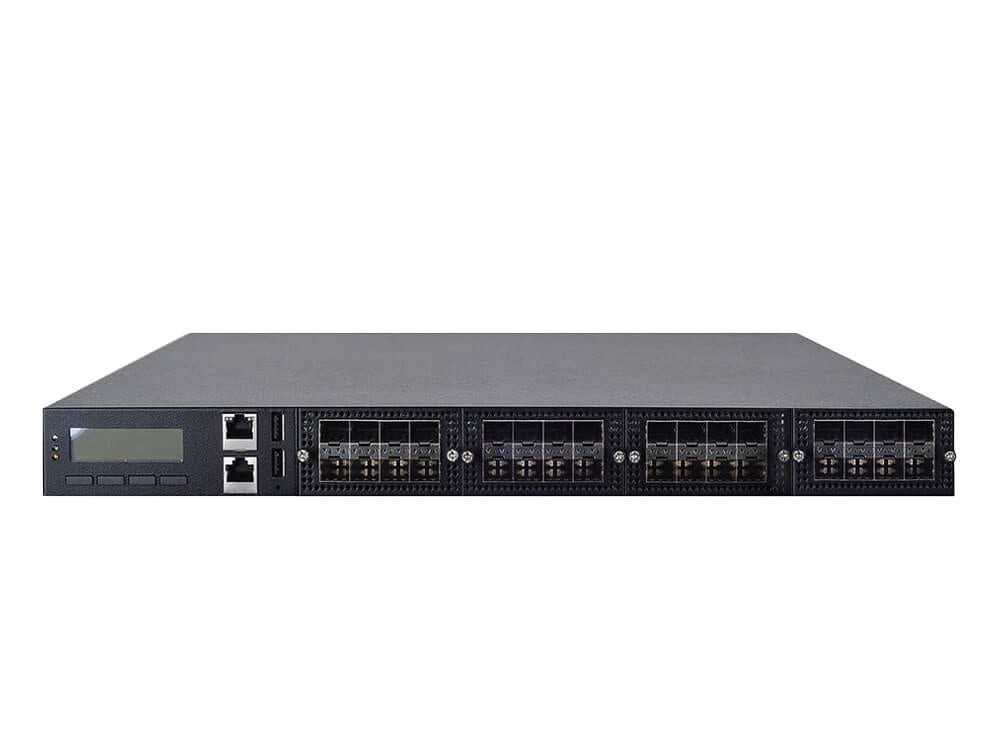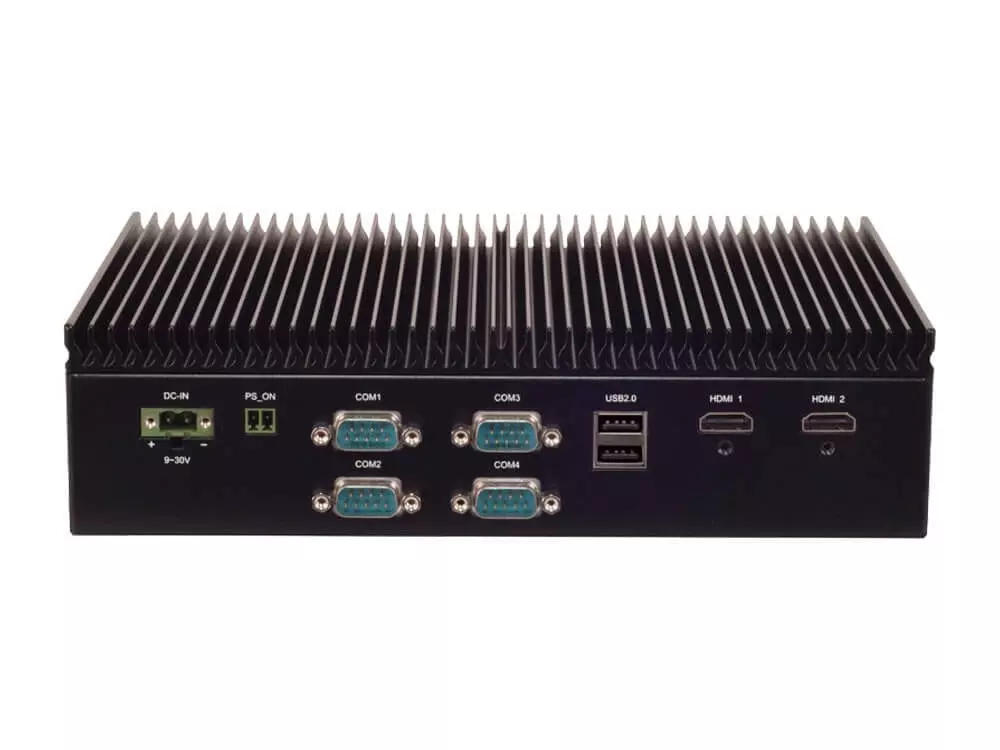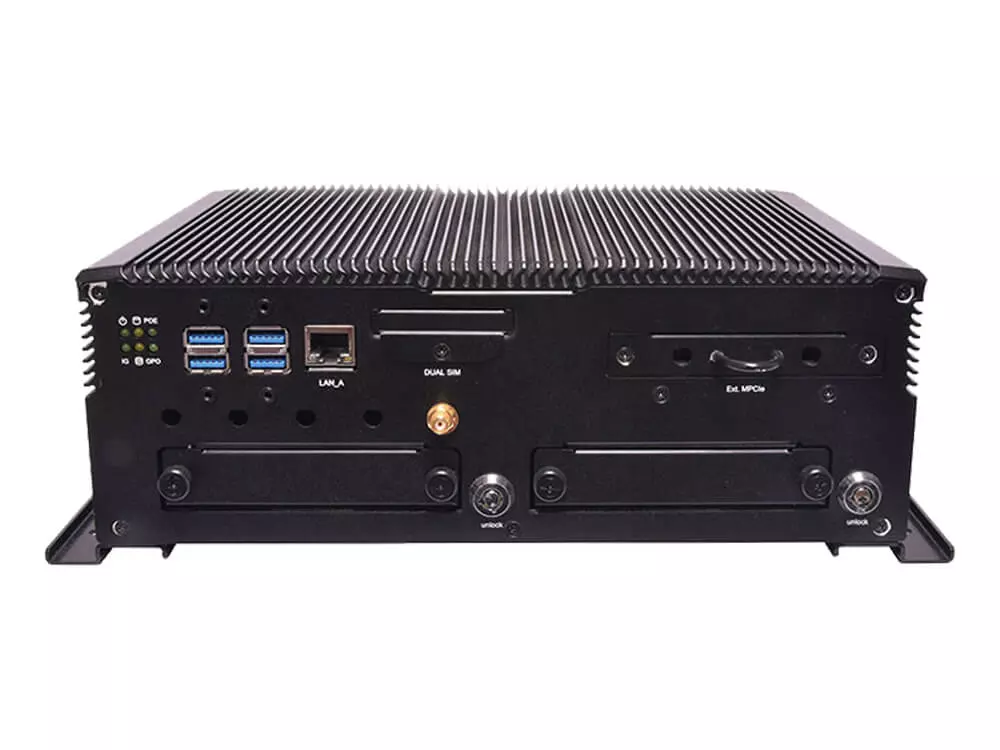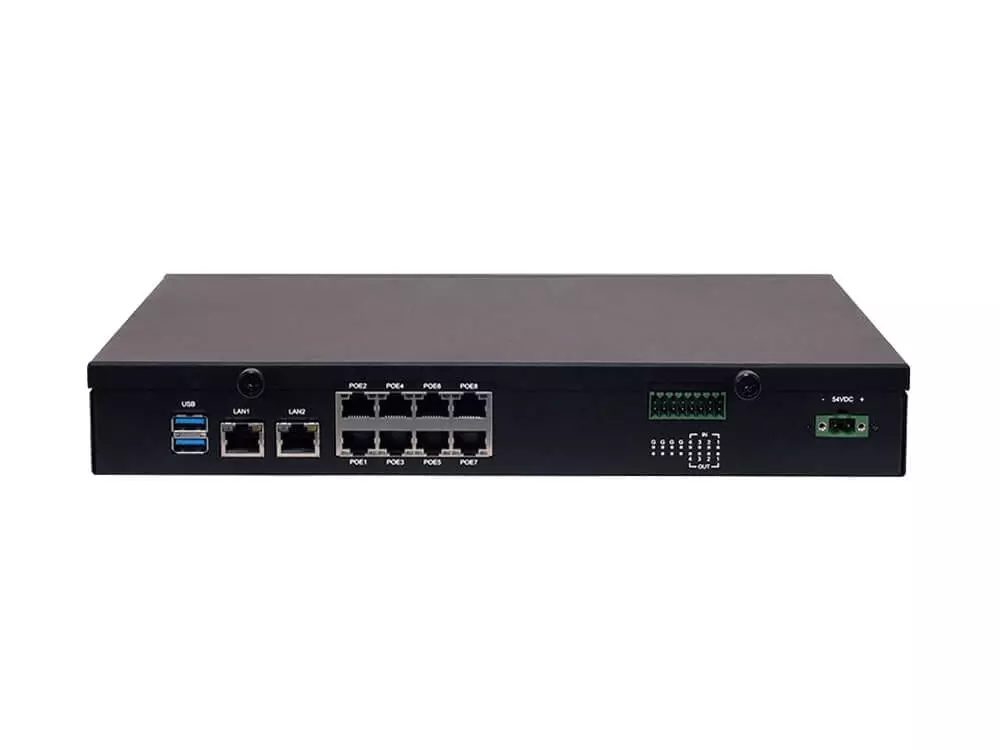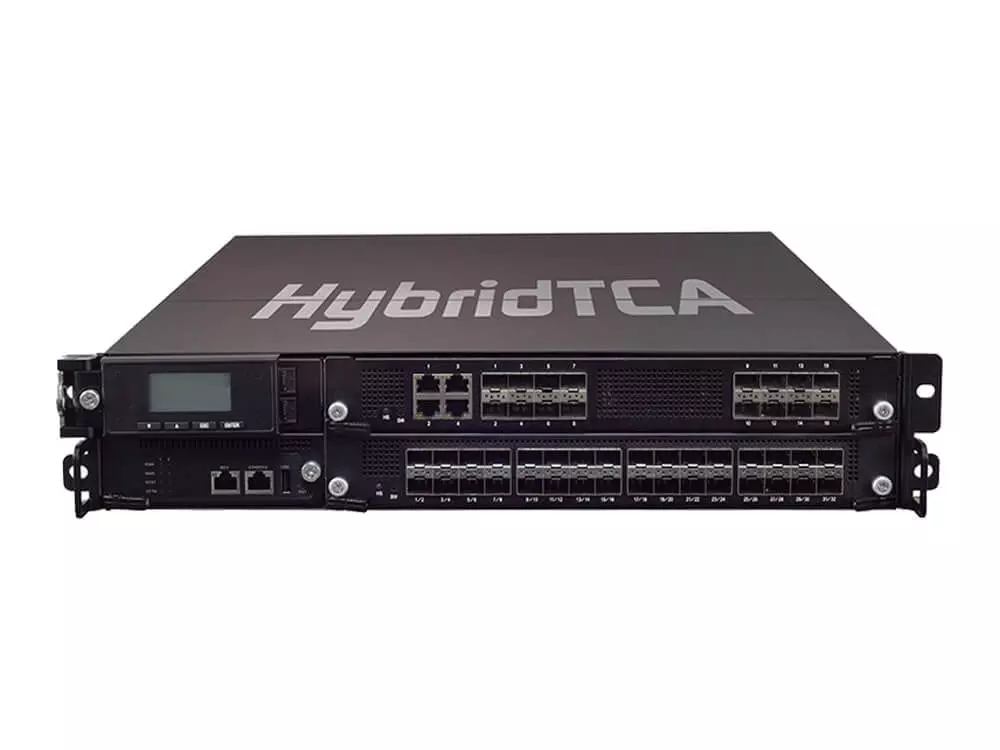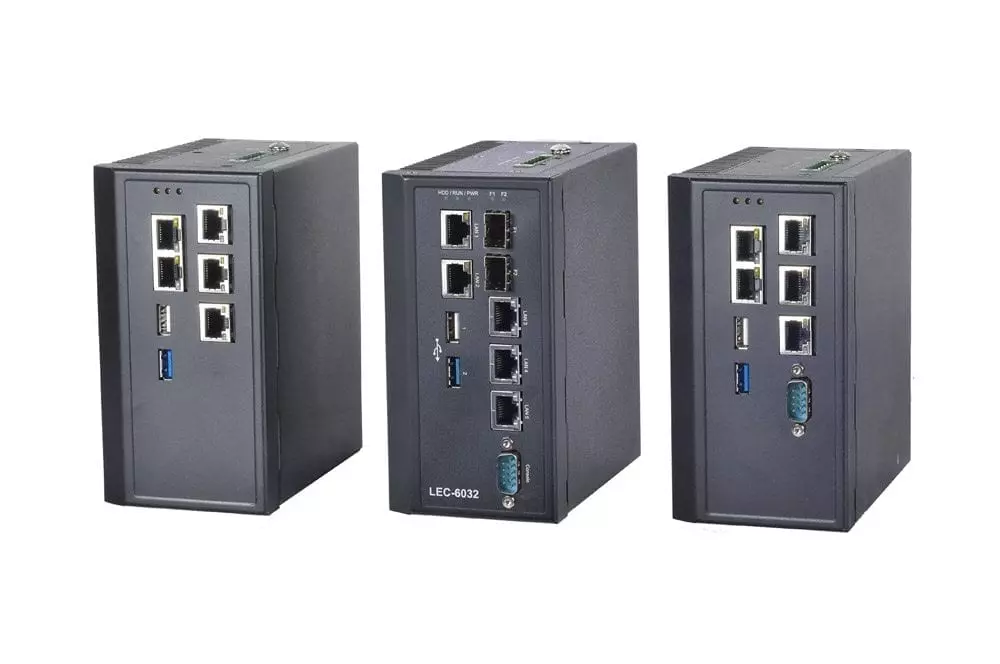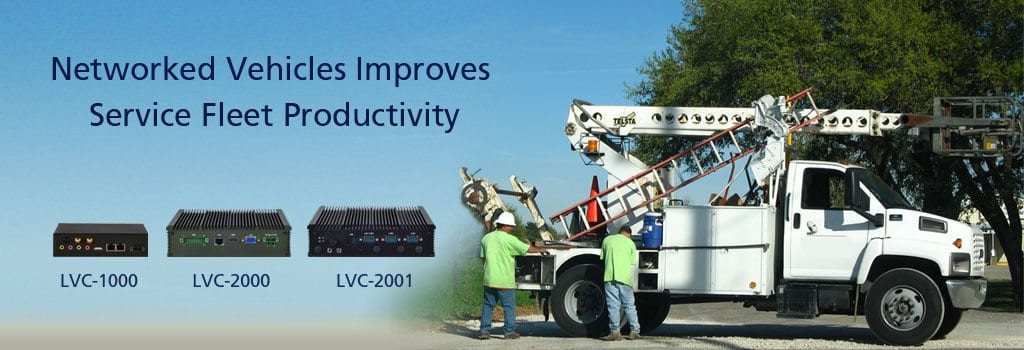
Background
Nowadays, service fleet managers have put a strong emphasis on vehicle-to-center networking and communications in order to improve their productivity, cost-effectiveness and customer satisfaction. Drivers also demand a better working experience when conducting their tasks. The concerns are mostly centered at driver safety, fuel-efficiency, usage-optimizations, and asset monitoring. In other words, fleet managers wish to establish more efficient communication and job-dispatch mechanisms between service fleets and operation centers.
Requirement
As mentioned, wirelessly networked vehicle-to-center solution is the key to maximize service efficiency and task management. To assist fleet management companies to achieve their objectives, Lanner has identified several technical requirements for their needs.
Asset Monitoring
Vehicles are assets that will age and encounter malfunction. Predictive maintenance is key to prevent emergent vehicle break-down upon conducting missions. CAN Bus is a useful hardware component for vehicle status tracking and driver behavior analysis. This will provide valuable information to pre-schedule vehicle repairs.
Networked Vehicles and Telematics
This is perhaps one of the most essential elements among the technical requirements. The vehicles must be equipped with Internet accessibility such as 3G/4G/LTE to conduct job dispatching, real time reporting, improved response time and schedules for departures/arrivals.
Navigation
Fuel and mileage are among the largest expense in fleet management. With GPS navigation system, vehicles can travel under optimized route. At the same time, the operation center can track dispatched vehicles.
Shock and Vibration
An in-vehicle computing system must be able to endure considerable degrees of shock and vibration that may be encountered when traveling on unflat surfaces.
The Solution
To meet the technical requirements above for optimal fleet management, Lanner offers a series of entry and mid levels of vehicle computing systems, providing reliable vehicle-to-vehicle communications at affordable implementation costs.

Lanner’s vehicle computing LVC- line adopts power-efficient CPUs, ranging from Intel Quark to Atom (codenamed “Bay Trail”). This would optimize power consumption for in-vehicle settings without consuming car battery considerably.
As said, vehicles have to be networked for efficient communications between dispatched fleets and operation centers. Lanner’s LVC- product lineups are designed with multiple mini-PCI Express sockets for Wi-Fi and Cellular (3G/4G/LTE) modules. Once the necessary modules installed, wireless Internet connectivity is enabled so that vehicles can communicate with each other or operation centers much more effectively for job-dispatching and task completion measurement. In addition to network connectivity, Lanner’s LVC-2001 even supports multiple SIM card function so that service fleets are able to automatically switch to different regional network service providers/carriers when traveling to another region/country. This will greatly save SIM roaming cost.
GPS is another necessary implementation in Lanner’s vehicle computing line. With this navigation feature, vehicles on missions can optimize their traveling time with route planning, since time waste and fuel are the largest expense for fleet services.
In-vehicle reliability is also taken into considerations. As vehicles are frequently traveling, sometimes on unflat surfaces, Lanner’s LVC-1000/2000/2001 are all MIL-STD-810G certified for shock and vibration. In addition, all these models have passed E13 certifications. Other reliability features include power ignition management and fanless design.
For driving record analysis, Lanner offers optional CAN Bus design to connect OBDII (On-Board Diagnostic 2) for vehicle diagnose and predictive maintenance. Aside from CAN Bus, Lanner’s LVC-1000/2000/2001 (model dependent) are designed with G-senor, providing further recorded data for acceleration and physical impact of a vehicle.
Fleet management vehicles may have to be connected with other instruments to conduct their missions. Lanner’s LVC-1000/2000/2001 are all equipped with serial COM ports, with RS-232, RS-422 and/or RS-485 configurations for connections with TPMS (Tire Pressure Monitoring System), driver advisory system, temperature sensor or other instruments. As designed for networked vehicles, LVC-1000/2000/2001 come with multiple LAN ports, connectable with networking devices or NVR for surveillance recording. In order to establish connections with extra sensors, Lanner’s vehicle computing systems offer Digital I/Os or GPIO, depending on model selections. For video display, LVC-2000 and LVC-2001 provide VGA and HDMI output ports so that display can be established around the dashboard.
Quick Comparison Table of Lanner’s LVC- Product Line
| LVC-1000 | LVC-2000 | LVC-2001 | |
| CPU | Intel Quark SoC X1001 400 MHz | Intel® Atom™ E3845 1.91 GHz (Bay Trail) | Intel® Atom SoC E3845 CPU (Bay Trail) |
| LAN (RJ-45) | 1 | 1 | 2 |
| COM | 1 x RS-232 | 2 x RS-232/485 | 2 x RS-232/422/485 |
| Expansion | 1 x full-size mini-PCIe 1 x half-size mini PCIe |
1 x full-size mini-PCIe 1 x half-size mini PCIe |
2 x full-size mini-PCIe 1 x half-size mini PCIe |
| SIM slots | 1 | 1 | 4 |
| Shock/Vibration | MIL-STD-810G | MIL-STD-810G | MIL-STD-810G |
| USB (external port) | 3 x USB 2.0 type A, | 1 x USB 3.0 Type A | 1 x USB 3.0 type A 1 x USB 2.0 type A |
| Temperature | -20°C to 70°C | -20~60°C | -20~60°C |
| Dimensions (mm) | 162.8 x 41 x 133.8 | 198 x 52 x 165 | 198 x 52 x 185 |
| GPS | Optional | Onboard u-blox NEO-7N |
Onboard u-blox NEO-7N |
| G-sensor | ADXL 345 | ADXL 345 | ADXL 345 |
| Power input | +9~36VDC | +9~36VDC | +9~36VDC |
| LVC-1000 | LVC-2000 | LVC-2001 | |
| Digital I/O | GPIO pin header | 4xDI & 4xDO | 4xDI&4xDO |
| Antenna | 3 | 4 | 4 |
| CAN bus | Optional | Optional | Optional |
| Certifications | CE, FCC Class A, RoHS, E13 | CE, FCC Class A, RoHS, E13 | CE, FCC Class A, RoHS, E13 |
